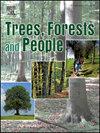Forest restoration efficiency: A comparative analysis of collectively vs. individually managed forests in Nepal
IF 2.7
Q1 FORESTRY
引用次数: 0
Abstract
Community-based forest management under formal collective arrangements is increasingly recognized as a strategy for landscape restoration worldwide. In Nepal, the leasehold forestry program, one collective management approach, is regarded as a pro-poor global model for forest restoration. However, its impact on the livelihoods of households with varying socio-economic characteristics remains poorly understood, particularly in comparison to individually managed forests of similar type and government ownership. This study compares net income from collectively managed forests with that from comparable individually managed forests, examining the socio-economic factors that influence net income in both restored forest types. We first matched biophysical characteristics of collectively managed (leasehold) forests and individually managed forest, and thereafter, a statistically representative sample (n = 322) of households from collectively managed forests and (n = 152) households from individually managed forests were interviewed. Using a comprehensive regression model, we analyzed the relationship between socio-economic factors and net income, focusing on differences between the two types of forest management. Our findings reveal that households in the collectively managed forest areas earned approximately 30 % more annual net income from forests compared to those in the individually managed forests. Non-farm and collectively managed forest income were significant contributors to household income in collectively managed forest areas, while income from individually managed forests dominated in those areas. Notably, lower economic class households were positively associated with higher net income from forests in both settings. Surprisingly, female-headed households in collectively managed forests reported lower net income compared to those in individually managed forest areas. These results underscore the benefits of the collectively managed system, but also indicate the need to review the program to ensure better access for dependent households.
求助全文
约1分钟内获得全文
求助全文
来源期刊

Trees, Forests and People
Economics, Econometrics and Finance-Economics, Econometrics and Finance (miscellaneous)
CiteScore
4.30
自引率
7.40%
发文量
172
审稿时长
56 days
 求助内容:
求助内容: 应助结果提醒方式:
应助结果提醒方式:


